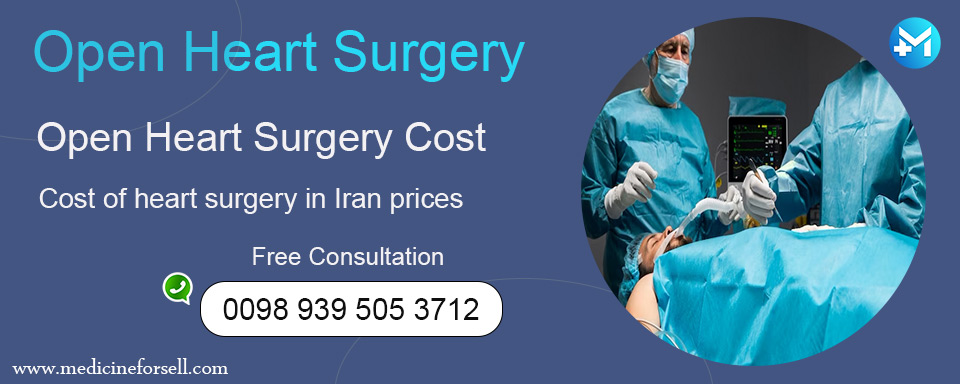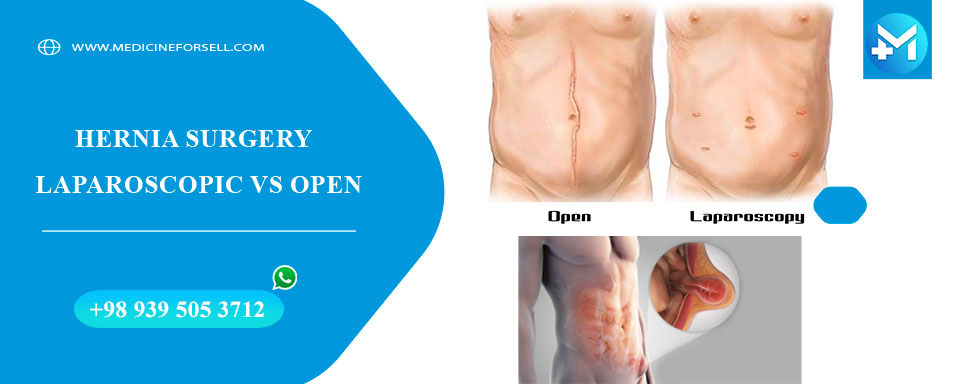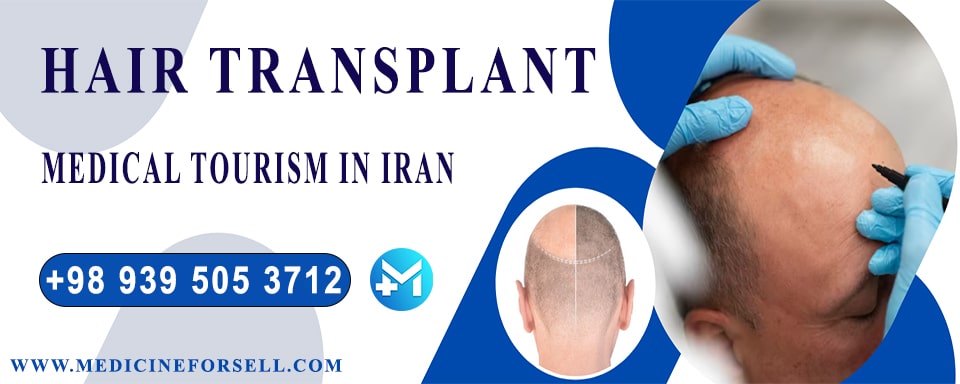

Open Heart Surgery
Open-heart surgery is any type of surgery in which the chest is opened and surgery on the heart’s muscles, valves, or arteries is performed. The National Heart, Lung, and Blood Institute (NHLBI) reports that coronary artery bypass grafting (CABG) is the most common type of adult heart surgery. A healthy artery or vein is grafted (attached) to a blocked coronary artery during this surgery. The grafted artery can now “bypass” the blocked artery and bring fresh blood to the heart. Open-heart surgery is also known as traditional heart surgery. Many new heart procedures can now be performed through small incisions rather than large openings. As a result, the term “open-heart surgery” can be deceptive.
When Is Open-Heart Surgery Needed?
Open-heart surgery may be done to perform a CABG. A coronary artery bypass graft may be necessary for people with coronary heart disease. Coronary heart disease occurs when the blood vessels that provide blood and oxygen to the heart muscle become narrow and hard. This is often called “hardening of the arteries.”
Hardening occurs when fatty material forms a plaque on the walls of the coronary arteries. This plaque narrows the arteries, making it difficult for blood to get through. When blood can’t flow properly to the heart, a heart attack may occur.
Open-heart surgery is also done to:
. repair or replace heart valves, which allow blood to travel through the heart
. repair damaged or abnormal areas of the heart
. implant medical devices that help the heart beat properly
. replace a damaged heart with a donated heart (heart transplantation)
How Is Open-Heart Surgery Performed?
According to the National Institutes of Health, a CABG takes from three to six hours. It’s generally done following these basic steps:
. The patient is given general anesthesia. This ensures that they will be asleep and pain free through the whole surgery.
. The surgeon makes an 8- to 10-inch cut in the chest.
. The surgeon cuts through all or part of the patient’s breastbone to expose the heart.
. Once the heart is visible, the patient may be connected to a heart-lung bypass machine. The machine moves blood away from the heart so that the surgeon can operate. Some newer procedures do not use this machine.
. The surgeon uses a healthy vein or artery to make a new path around the blocked artery.
. The surgeon closes the breastbone with wire, leaving the wire inside the body.
. The original cut is stitched up.
Sometimes sternal plating is done for people at high risk, such as those who’ve had multiple surgeries or people of advanced age. Sternal plating is when the breastbone is rejoined with small titanium plates after the surgery.
What Are the Risks of Open-Heart Surgery?
Risks for open-heart surgery include:
. chest wound infection (more common in patients with obesity or diabetes, or those who’ve had a CABG before)
. heart attack or stroke
. irregular heartbeat
. lung or kidney failure
. chest pain and low fever
. memory loss or “fuzziness”
. blood clot
. blood loss
. breathing difficulty
. pneumonia
According to the Heart and Vascular Center at the University of Chicago Medicine, the heart-lung bypass machine is associated with increased risks. These risks include stroke and neurological problems.
How To Prepare for Open-Heart Surgery
Tell your doctor about any drugs you are taking, even over-the-counter medications, vitamins, and herbs. Inform them of any illnesses you have, including herpes outbreak, cold, flu, or fever. In the two weeks before the surgery, your doctor may ask you to quit smoking and stop taking blood-thinning medications, such as aspirin, ibuprofen, or naproxen.
It’s important to talk to your doctor about your alcohol consumption before you prepare for the surgery. If you typically have three or more drinks a day and stop right before you go into surgery, you may go into alcohol withdrawal. This may cause life-threatening complications after open-heart surgery, including seizures or tremors. Your doctor can help you with alcohol withdrawal to reduce the likelihood of these complications.
The day before the surgery, you may be asked to wash yourself with a special soap. This soap is used to kill bacteria on your skin and will lessen the chance of an infection after surgery. You may also be asked not to eat or drink anything after midnight. Your healthcare provider will give you more detailed instructions when you arrive at the hospital for surgery.
What Happens After Open-Heart Surgery?
When you wake up after surgery, you will have two or three tubes in your chest. These are to help drain fluid from the area around your heart. You may have intravenous (IV) lines in your arm to supply you with fluids, as well as a catheter (thin tube) in your bladder to remove urine. You will also be attached to machines that monitor your heart. Nurses will be nearby to help you if something should arise.
You will usually spend your first night in the intensive care unit (ICU). You will then be moved to a regular care room for the next three to seven days.
Recovery, Follow-Up, And What to Expect
Taking care of yourself at home immediately after the surgery is an essential part of your recovery.
Incision care
Incision care is extremely important. Keep your incision site warm and dry, and wash your hands before and after touching it. If your incision is healing properly and there is no drainage, you can take a shower. The shower shouldn’t be more than 10 minutes with warm (not hot) water. You should ensure that the incision site isn’t hit directly by the water. It’s also important to regularly inspect your incision sites for signs of infection, which include:
. increased drainage, oozing, or opening from the incision site
. redness around the incision
. warmth along the incision line
. fever
Pain management
Pain management is also incredibly important, as it can increase recovery speed and decrease the likelihood of complications like blood clots or pneumonia. You may feel muscle pain, throat pain, pain at incision sites, or pain from chest tubes. Your doctor will likely prescribe pain medication that you can take at home. It’s important that you take it as prescribed. Some doctors recommend taking the pain medication both before physical activity and before you sleep.
Get enough sleep
Some patients experience trouble sleeping after open-heart surgery, but it’s important to get as much rest as possible. To get better sleep, you can:
. take your pain medication a half hour before bed
. arrange pillows to decrease muscle strain
. avoid caffeine, especially in the evenings
In the past, some have argued that open-heart surgery leads to a decline in mental functioning. However, most recent research has found that not to be the case. Though some patients may have open-heart surgery and experience mental decline later on, it’s thought that this is most likely due to the natural effects of aging. Some people do experience depression or anxiety after open-heart surgery. A therapist or psychologist can help you manage these effects.
Rehabilitation
Most people who’ve had a CABG benefit from participating in a structured, comprehensive rehabilitation program. This is usually done outpatient with visits several times a week. The components to the program include exercise, reducing risk factors, and dealing with stress, anxiety, and depression.
Long-Term Outlook for Open-Heart Surgery
Expect a gradual recovery. It may take up to six weeks before you start feeling better, and up to six months to feel the full benefits of the surgery. However, the outlook is good for many people, and the grafts can work for many years. Nevertheless, surgery does not prevent artery blockage from happening again. You can help improve your heart health by:
. eating a healthy diet
. cutting back on foods high in salt, fat, and sugar
. leading a more active lifestyle
. not smoking
. controlling high blood pressure and high cholesterol
Alternatives
There are now some alternatives to opening the chest to perform heart surgery, including the use of endoscope cameras and robots. Sometimes, surgeons can treat narrowed coronary arteries by making minimally invasive cuts to the skin and using the da Vinci robot to perform the surgery. The Da Vinci is a multi-limbed, robotic surgical tool, which the surgeon controls remotely. The procedure is called endoscopic coronary artery bypass surgery.
This procedure has no advantages in terms of effectiveness or safety over open-heart surgery. Both types of surgery require a similar length of stay and care plan in the hospital. The main difference is that people who have undergone this less invasive surgery recover in less time than those who have had more traditional surgery.
Other alternatives to open heart surgery include:
. Angioplasty: During this procedure, a surgeon places a stent inside the narrowed artery to widen it.
. Transcatheter aortic valve replacement: This involves inserting a new valve via a catheter. This opens out once in place, expanding the blood vessel.
. Aortic valve balloon valvuloplasty: This procedure involves inserting a balloon to enlarge a valve.
Open Heart Surgery Cost
While we encourage you to contact our support team to get a more precise estimate of the final costs, it’s worth noting that an average cost of open-heart surgery in Iran is $8,600. Keep in mind that this surgery costs $135,000 in the U.S., around $40,000 in Europe, close to $25,000 in Thailand and $17,000 in Turkey.
About Medicine for sell
Medicine for sell is an online medical tourism platform where you can find the best doctors, surgeons and specialists in Iran. The price of Open-Heart Surgery in Iran can vary according to each individual’s case and will be determined by an in-person assessment with the doctor.
For more information about the cost of Open-Heart Surgery in Iran and to schedule an appointment in advance, you can contact Medicine for sell consultants via WhatsApp number 0098 939 505 3712. This service is completely free.
Cost of heart surgery in Iran prices
| Full heart examination | 200$ |
| Excision of cancerous tumors | 700$ |
| Imaging of blood vessels with a computerized tomography device | 3500$ |
| Examination of the heart with an MRI machine | 3,300$ |
| Coronary angiography | 800$ |
| Bypass angiography | 1150$ |
| Angiography | 1800-2550$ |
| Cerebral angiography | 950$ |
| Catheter removal (k2800) | 2200$ |
| Catheter ablation (k4500) | 3000$ |
| Pacemaker implantation | 1900-2200$ |
| Cardiac resynchronization treatment with the device | 5,800$ |
| Open heart surgery | 4000-5500$ |
| Opening heart valves | 4500-6000$ |
| Opening the heart and blood vessels and replacing valves | 4500-5500 |
| Transcatheter valve replacement | 6,000$ |
Source:




